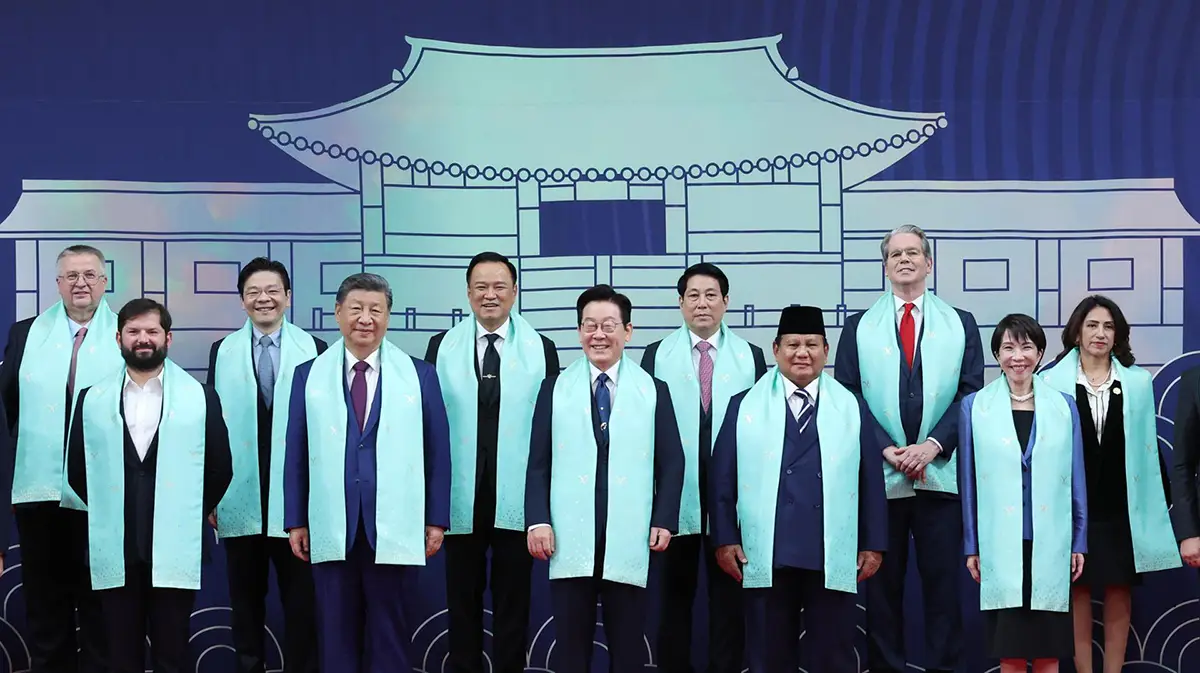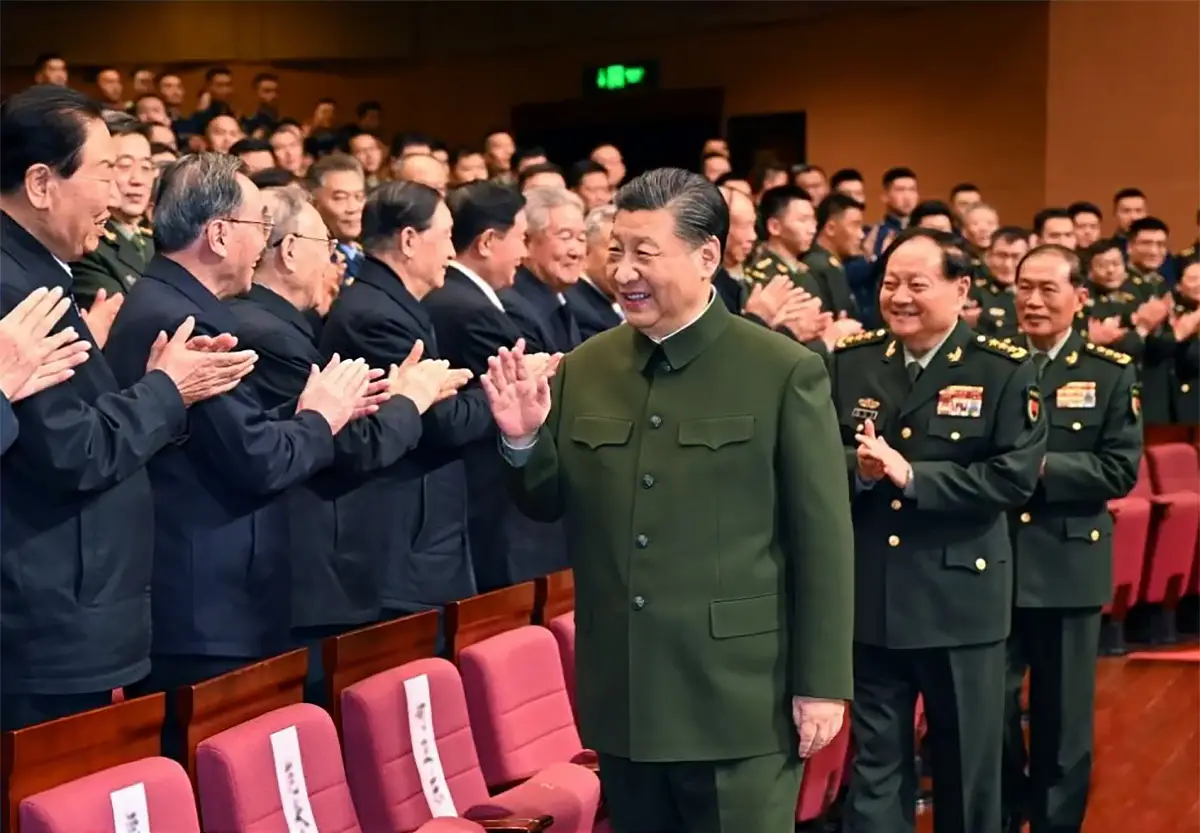On July 13, the Japanese Ministry of Defense released the latest edition of its annual white paper, Defense of Japan 2021 . The characteristically voluminous document describes a range of security concerns, including China’s growing military capabilities, high-tempo China Coast Guard (CCG) operations around the contested Senkaku Islands and expanded CCG operational authorities granted under recently passed domestic legislation.
Notable in the defense white paper’s litany of China-related concerns is the language used to describe Taiwan. The document claims that “stabilizing the situation surrounding Taiwan is important for Japan’s security and the stability of the international community,” and stresses that the situation must be closely watched with a “sense of crisis” (kinchoukan). At a press conference held for the defense white paper’s release, Japanese Defense Minister Nobuo Kishi reiterated the importance of Taiwan’s stability to Japan and the need to maintain vigilance of the cross-Strait situation with a “sense of crisis.”
This direct, emotive language on Taiwan’s importance to Japan is a clear departure from past defense white papers, which reported events in the cross-Strait situation but refrained from controversial commentary. The 2020 edition , for example, states that “the overall military balance between China and Taiwan is tilting to China’s favor” and provides charts and statistics to illustrate that point. The 2020 document does not, however, expound on the significance of the China-Taiwan balance to Japan’s own security. With the new publication’s release, Japanese leaders have chosen to reduce some of the ambiguity in the government’s stance on Taiwan and to do so in a very public way.
The new defense white paper comes on the heels of a series of public statements concerning Taiwan made by senior Japanese officials this year, which include:
- March 16: a joint statement from U.S. and Japanese diplomatic and defense leaders’ “2+2” talks affirmed that the two sides “underscored the importance of peace and stability in the Taiwan Strait.”
- April 16: a joint statement from a summit between Japanese Prime Minister Yoshihide Suga and U.S. President Joe Biden stated that the two countries “underscore the importance of peace and stability across the Taiwan Strait and encourage the peaceful resolution of cross-Strait issues.”
- April 17: at a press conference , Japanese Defense Minister Kishi described Taiwan as an “important friend” located “extremely close” to Japan. Kishi said peace and stability in Taiwan is linked to regional and international peace and prosperity.
- June 28: in a pre-recorded speech with the Hudson Institute, Japan’s Deputy Defense Minister Yasuhide Nakayama called Taiwan a “brother” and a “democratic country” that must be protected.
- July 5: at a fundraising event , Japanese Deputy Prime Minister Taro Aso said a Chinese invasion of Taiwan would constitute an “existential threat” against which Japan may be required to exercise collective self-defense.
China’s government responded promptly and vociferously to the release of Japan’s latest defense white paper, condemning its language about Taiwan and warning that such rhetoric boded poorly for China-Japan relations. Within hours of the document’s release, a Chinese Foreign Ministry spokesperson asserted that “the Taiwan question is purely China’s internal affair” and that China “never allows interference in the Taiwan question in any form by any country.” The State Council’s Taiwan Affairs Office criticized Japan for sending “erroneous signals” to pro-independence groups in Taiwan, while China’s embassy in Japan accused Tokyo of manufacturing threats in its periphery for the nefarious purpose of “loosening restrictions on Japan’s military expansion.”
China’s indignation over Tokyo’s public rhetoric on Taiwan is undoubtedly compounded by the fact that U.S. allies in Europe and North America have been making similar statements of late. The G7 called out Chinese coercion against Taiwan in the group’s summit communiqué released June 13, 2021. The communiqué states that the G7 countries “underscore the importance of peace and stability across the Taiwan Strait” and “strongly oppose any unilateral attempts to change the status quo and increase tensions” in the East or South China Seas. Although not explicitly naming Taiwan, NATO’s June 14 communiqué claims, “China’s stated ambitions and assertive behavior present systemic challenges to the rules-based international order and to areas relevant to Alliance security.” A week earlier, NATO Secretary General Jens Stoltenberg had minced fewer words during a meeting at the Pentagon with U.S. Secretary of Defense Lloyd Austin. According to Stoltenberg , “Beijing does not share our values…. They crack down on peaceful dissent and religious minorities, threaten Taiwan, coerce their neighbors and hamper freedom of navigation in the South China Sea."
The forward-leaning language in Defense of Japan 2021 comes at a time when the Biden administration seeks to “reinvigorate” and “modernize” U.S. alliances and partnerships to “deter common threats.” One can assume that there is considerable behind-the-scenes discussion regarding corresponding deterrence measures. But deterrence will be diminished unless the U.S., Japan and other allies and partners can credibly communicate and implement common intent, capability and resolve against Chinese threats and intimidation. Japan’s new defense white paper and statements by Japanese leaders seem to indicate greater resolve by publicly tying Taiwan’s security to Japan’s own security interests. While this rhetoric may not change Chinese analysts’ and planners’ expectations about Japan’s role in a cross-Strait conflict, it nonetheless obliges them to reexamine their assumptions.
Going forward, the U.S., Japan and other allies and partners who express solidarity and support for Taiwan’s security must maintain and strengthen coordinated actions in the face of Beijing’s inevitable anger and possible reprisals. The U.S., Japan and like-minded countries should continue to issue bilateral or multilateral government statements that communicate common intent to preserve and protect a “free and open” Indo-Pacific. They should also seek ways to signal shared capability and resolve through sustained and more complex military exercises under multilateral frameworks, including the “Quad” framework consisting of the U.S., Japan, India and Australia.
The economic dimensions of alliances and partnerships, however, should not be overlooked. Many countries in the region, including Japan, depend heavily on intertwined trade, finance and investments with China and fear that economic coercion—exemplified by Beijing’s sanctions against Australia in recent years—could be directed at them or intensified. As the U.S. seeks to strengthen its alliances and partnerships, it should continue to work with Japan and other like-minded countries to create alternative supply chains independent of Chinese goods and services. No supply chain can be completely de-risked, and China’s power to economically punish will likely endure. However, mitigating Beijing’s economic coercion by creating reliable, trustworthy and sustainable supply chains for critical industries will be indispensable for the U.S. and its allies and partners as they speak out and act in support of Taiwan and other shared interests. The economic dimension of cross-Strait stability, like the security dimension, must be treated with a “sense of crisis.”
Brian Waidelich is a Research Scientist in CNA’s Indo-Pacific Security Affairs Program. His research focuses on issues related to strategic competition and Indo-Pacific maritime security.
Elizabeth Barrett is the Project Manager for Outreach and International Engagement in CNA’s China & Indo-Pacific Security Affairs Division. Her research interests include U.S. alliances and partnerships in the Indo-Pacific.


